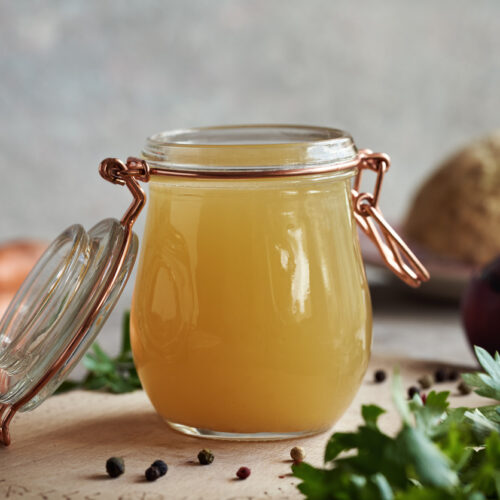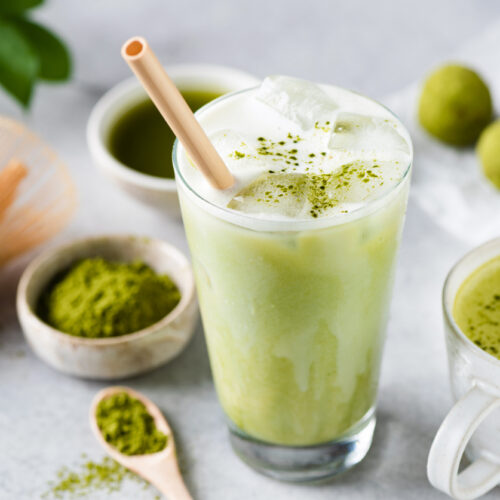
Why is it we crave chocolate and hot chips, and never broccoli? And why is it hard to stop at just one bite? Nutrition and health writer Paula Goodyer explains why some foods are so irresistible.
Doesn’t it seem strange that even though we’re well aware of the health risks of eating too many over-processed foods, we find it all too easy to reach for that bag of salty chips instead of an apple when we want a snack? Many of the foods that tempt us most, such as chocolate, pizza, ice cream, French fries, biscuits and chips are highly processed, rich in fat and sugar or salt, and low in fibre — the exact opposite of the foods rated as the least ‘addictive’, which included broccoli, brown rice, carrots and bananas, according to a recent US study.
But too much fat, sugar or salt aren’t the only things the foods we crave have in common. They also have a high glycaemic load – meaning they are rapidly absorbed into the blood stream, creating spikes in blood sugar. This is linked to ‘addictive-like’ eating, say the researchers.
Are we all ‘addicted’?
Studies have found similarities between drug dependence and addictive behaviour with food. Having difficulty controlling how much we eat of certain foods is one similarity; and continuing to overeat despite serious health problems is another.
In a US experiment, researchers found naloxone, a drug used to treat heroin addiction, also cut cravings for sweet foods.
“But the jury’s out on whether food addiction really exists – there’s not a lot of hard evidence,” says dietitian and University of Newcastle senior lecturer in Nutrition and Dietetics Tracy Burrows.
“Research shows nutrient-poor, highly processed foods with a lot of sugar, fat and salt are most likely to be linked to addictive behaviour to food. Studies show that in some people, these foods stimulate the brain to produce ‘feel good’ brain chemicals, in the same way that drugs do.”
Many experts suggest we’re genetically programmed to overeat foods that are sweet, fatty and salty because high-kilojoule foods were in short supply in our caveman days. So, when we found these foods, we needed to eat as much of them as we could. In other words, overeating isn’t so much about willpower as it is about biology.
But this doesn’t explain why not everyone overeats these foods, Dr Burrows says. “We’re all exposed to the same food supply, yet only around 20 per cent of us fit the criteria for addictive behaviour with food. People have different drives for overeating. So, is it something in food that’s potentially addictive or is it more to do with habit – like associating sitting on the couch with eating a bag of chips?”
The bite on your health
We are often told that eating too many highly processed foods can cause weight gain and increase the risk of heart disease. But science has now dug deeper to find more reasons to avoid these foods. Too much added salt, for instance, not only troubles our arteries, but potentially harms our immune system.
High salt intake can interfere with wound healing, according to work by University of Melbourne Department of Biochemistry and Molecular Biology research fellow Katrina Binger.
“We’re looking at the impact of too much salt on the immune system, and whether reducing salt can lower the risk of autoimmune diseases such as multiple sclerosis,” Dr Binger says.
Research is also looking into the effects on our gut microbe — the bacteria now known to influence our health, including our immune system. There’s growing evidence that Western diets, with too little fibre and too much saturated fat, are disrupting the balance of these important microbes and driving the rise in allergies and autoimmune disease.
What makes some foods irresistible?
While some foods cause the brain to release ‘feel good’ chemicals, there are a few other reasons why we find it easy to overeat pizza and hard to binge on broccoli. “For starters, junk food usually requires a lot less chewing than whole foods, so it goes down a lot quicker and easier,” Dr Burrows says.
The intense ‘moreish’ flavours of highly processed food can leave our taste buds longing for more — and override our ‘I’ve had enough’ signals. Adding salt to fatty foods can suppress the body’s satiety mechanisms, thus encouraging us to overeat, according to researchers at Deakin University in Victoria.
Separately, David Kessler, former US Food and Drug Administration commissioner, took the food industry to task in his book, The End of Overeating.
Dr Kessler accused it of contributing to obesity by engineering food to be easy to overeat, by layering flavour on flavour on flavour.
He describes how one US restaurant chain amped up the flavour of its chicken wings: the chicken meat is first pumped with additives to bulk it up and make it softer. Then it’s marinated with a sauce made with sugar, hoisin sauce, soy sauce, chilli paste, modified food starch and concentrated orange juice, and battered, crumbed and fried. And if that’s not enough, it’s served with a dressing of mayo, buttermilk and wasabi.
The hidden punch behind the crunch
The crunch factor can also help hook our taste buds. Like Dr Kessler’s example of chicken wings, many highly processed and fast foods are baked, fried or toasted to create crispy textures which are easy to overeat.
But crunchiness often comes with a cost, says Baker IDI Heart and Diabetes Institute associate professor Melinda Coughlan.
Cooking foods at high temperatures, especially meat that is high in fat and protein, produces compounds called Advanced Glycation End products (AGEs). Diets high in AGEs are linked to a higher risk of chronic disease, Dr Coughlan explains. Sugary and highly processed foods can also be high in AGEs.
“We can’t say for sure what the impact of a high-AGE diet is, but studies have shown that it increases inflammation and oxidative stress in the body, and we know that these are closely linked to type 2 diabetes and obesity,” she says.
The 10 most ‘addictive’ foods
Students in a study at the University of Michigan were asked to rate foods based on symptoms of ‘addictive-like’ eating such as: eating more than they should, being unable to ‘quit’ a food, and showing an increased ‘tolerance’ towards a food. These were the foods they rated as the most problematic.
- Pizza
- Chocolate
- Chips
- Cookies
- Ice cream
- French fries
- Non-diet soda
- Cake
- Cheeseburgers
- Muffins
The 10 least ‘addictive’ foods
- Bananas
- Brown rice
- Apples
- Strawberries
- Beans (no sauce)
- Carrots
- Cucumbers
- Corn (no butter or salt)
- Salmon
- Broccoli
Teaching taste buds
If you’re accustomed to eating less healthy foods on a regular basis, it can be hard to break the habit. Your taste buds don’t light up for fresh vegetables and unsweetened yoghurt the way they do for a burger or packet of chips. But they can.
Retraining your taste buds to enjoy food without adding salt or sugar takes around three weeks or more. To get you started, just follow our five-step plan towards a healthier way of eating.…
1. Don’t go ‘cold turkey’
Gradually introduce more whole foods into your diet each day. Start by replacing the salty snacks with fresh fruit. Then, as your taste buds are adjusting, move on to include more fresh veges, especially those that are in season, as they have more flavour, suggests dietitian Tania Ferraretto. Try salads for lunch, and load up your plate with veges at dinnertime.
“Your taste buds are very adaptable. It takes about three weeks to adjust to eating less salt. Use herbs and spices to make it easier,” Ms Ferraretto says.
2. Know what you’re really eating
Make a note of what you eat and drink over a few days by writing it down or using a food diary app, Dr Burrows suggests.
“You might think that you eat healthily, but then there’s that takeaway on Monday, a night out with friends on Tuesday, and cake in the office on Thursday.
“It’s not until you note it down that you can see what you’ve really been eating all week,” Dr Burrows says.
3. Beware of processed foods in disguise
Words such as ‘natural’ or ‘superfood’ don’t guarantee that a food has a healthy amount of sugar, salt or fat. So, always check the ingredients list to see exactly what the product contains.
4. Read the label
Not everything sold in packets is over-processed – rolled oats, natural muesli, wholegrain bread, frozen vegetables and fruit, as well as many dairy foods (the unsweetened kind) are just some examples of minimally processed foods, Ms Ferraretto says. Read the ingredients list on the back of the pack. And if salt or sugar is in the top three, or there is a long list of additives, leave it on the shelf.
5. Have healthy options on hand
We often rely on over-processed or fast food because it’s quick and ready to eat. Yet, there are so many healthy options that are just as convenient, such as frozen vegetables, cans of tuna and chickpeas, tinned tomatoes and microwavable rice blends.
Article sources and references
- Binger KJ et al. 2015. High salt reduces the activation of IL-4– and IL-13–stimulated macrophages. Journal of Clinical Investigation 125:4223-38https://www.ncbi.nlm.nih.gov/pmc/articles/PMC4639967/
- Dieuwerke PB et al. 2016. Salt promotes passive overconsumption of dietary fat in humans. Journal of Nutrition doi:10.3945/jn.115.226365https://www.researchgate.net/publication/296681786_Salt_Promotes_Passive_Overconsumption_of_Dietary_Fat_in_Humans
- Kellow NJ & Coughlan MT. 2015. Effect of diet-derived advanced glycation end products on inflammation. Nutrition Reviews 73:737-59https://www.ncbi.nlm.nih.gov/pubmed/26377870
- Kessler DA. 2009. The end of overeating: controlling the insatiable American appetite. Penguin Press
- Richards et al. 2016. Dietary metabolites and the gut microbiota: An alternative approach to control inflammatory and autoimmune diseases. Clinical & Translational Immunology. doi:10.1038/cti.2016.29https://www.ncbi.nlm.nih.gov/pubmed/27350881
- Schulte EM et al. 2015. Which foods may be addictive? The roles of processing, fat content, and glycemic load. PLOS ONE 10: e0117959https://www.ncbi.nlm.nih.gov/pubmed/25692302
www.healthyfood.com










